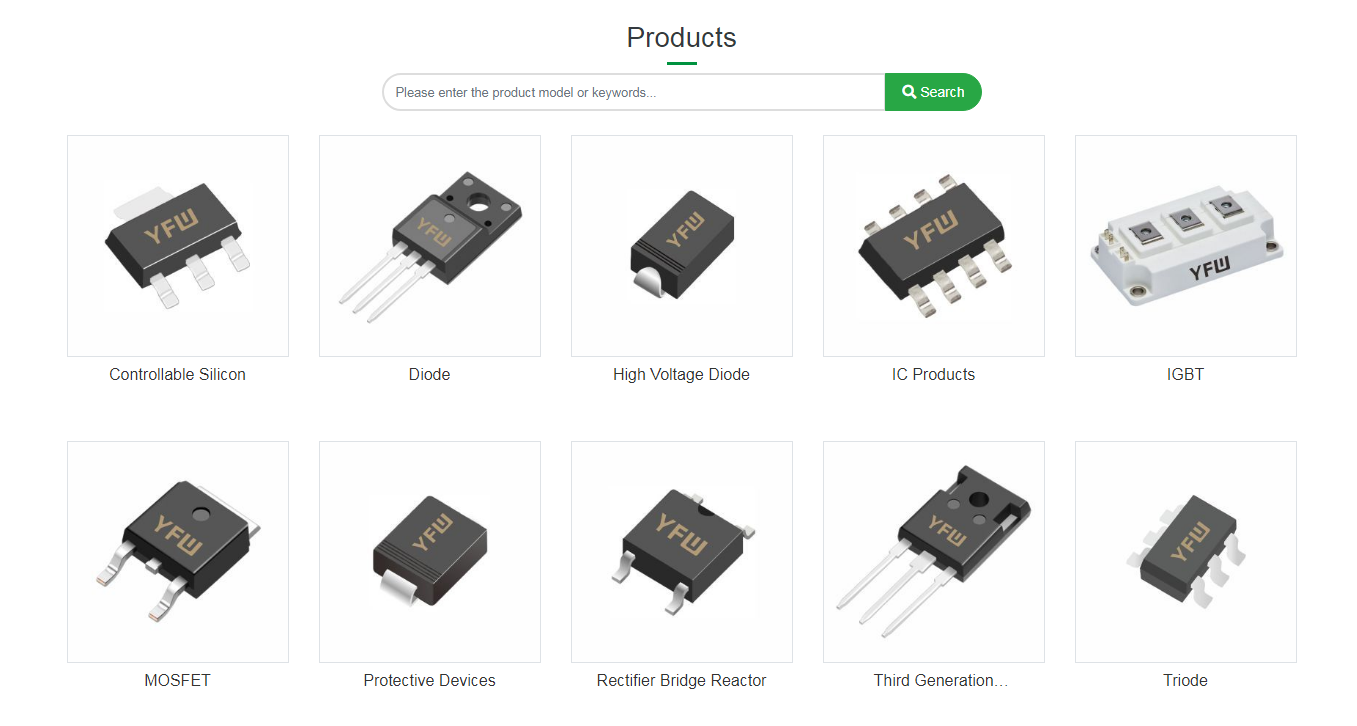Date:2025-03-18 Categories:Industry News Hits:900 From:Guangdong Youfeng Microelectronics Co., Ltd(YFW)
What is a flyback diode and its structure, principle, function, type, operation procedure, and history? A flyback diode is a semiconductor device with bidirectional conductivity characteristics, also known as a capacitor diode or a series-parallel thyristor. It typically used in parallel with a switch tube or other power devices in a circuit to eliminate reverse high-energy pulses and prevent reverse breakdown, thereby improving the stability and reliability of the system Its main function is to provide a controllable conduction path in an AC circuit to achieve precise control of current. The following is a detailed explanation of the flyback diode: 1. Structure: The structure of the flyback diode is similar to that of an ordinary diode, mainly consisting of P-type and N-type semiconductors by a PN junction. However, its special design allows it to withstand reverse high voltage. They are generally made of silicon material because silicon diodes have high voltage resistance and low voltage drop. 2. Principle: The working principle of the flyback diode is based on the unidirectional conductivity of the PN junction. When working with inductive load, the flyback diode is connected in reverse parallel across the load. When the circuit is powered on, the flyback diode is in the reverse cutoff state and not affect the normal operation of the circuit; when the circuit is turned off, the high reverse voltage released by the inductor quickly turns the flyback diode into a conductive, forming a loop to safely release the current released by the inductor, thus protecting the circuit from damage. 3. Function: The flyback diode can be for overvoltage protection, energy recovery, auxiliary components of resonant circuits, etc., and is widely used in the field of power electronics. 4. Type: Fly diodes can be classified according to different standards. According to the material, they can be divided into silicon diodes, Schottky diodes, etc.; according to the level, they can be divided into low, medium, and high voltage flyback diodes; according to the packaging form, they can be divided into surface-mounted (SMD and through-hole (DIP) types. 5. Operation procedure: The correct operation of the flyback diode is crucial to ensure the safe and stable operation the circuit. The following are the basic procedures for operating the flyback diode: 1. Installation: When installing the flyback diode, attention should be paid to connection direction of its positive and negative poles. Correct connection ensures its normal operation and avoids damage to the component due to reverse connection. 2. Working conditions: The flybackode should operate within the specified working voltage and current range. Operating outside these ranges may damage the component. In addition, it is necessary to avoid using in high temperature or humid environments ensure its performance and lifespan. 3. Thermal design: When designing the circuit, the thermal design of the flyback diode should be considered to ensure effective heat dissipation.cessive temperature can affect the reliability and performance of the component. 4. Insulation protection: To avoid external damage or dust contamination to the flyback diode, it is to add appropriate insulation protection measures when using, such as a case or a case cover, etc. 5. Precautions: When operating the flyback diode, avoid over or short-circuiting, and deal with any abnormal conditions that may arise in the circuit in a timely manner to avoid damaging the flyback diode

Previous:What is a Clamping Diode and its structure, advantages, principles, applications and history?
Next:NZT560A 1A 80V SOT-223 Marked NZT560A Small Signal Transistor Y Micro Brand